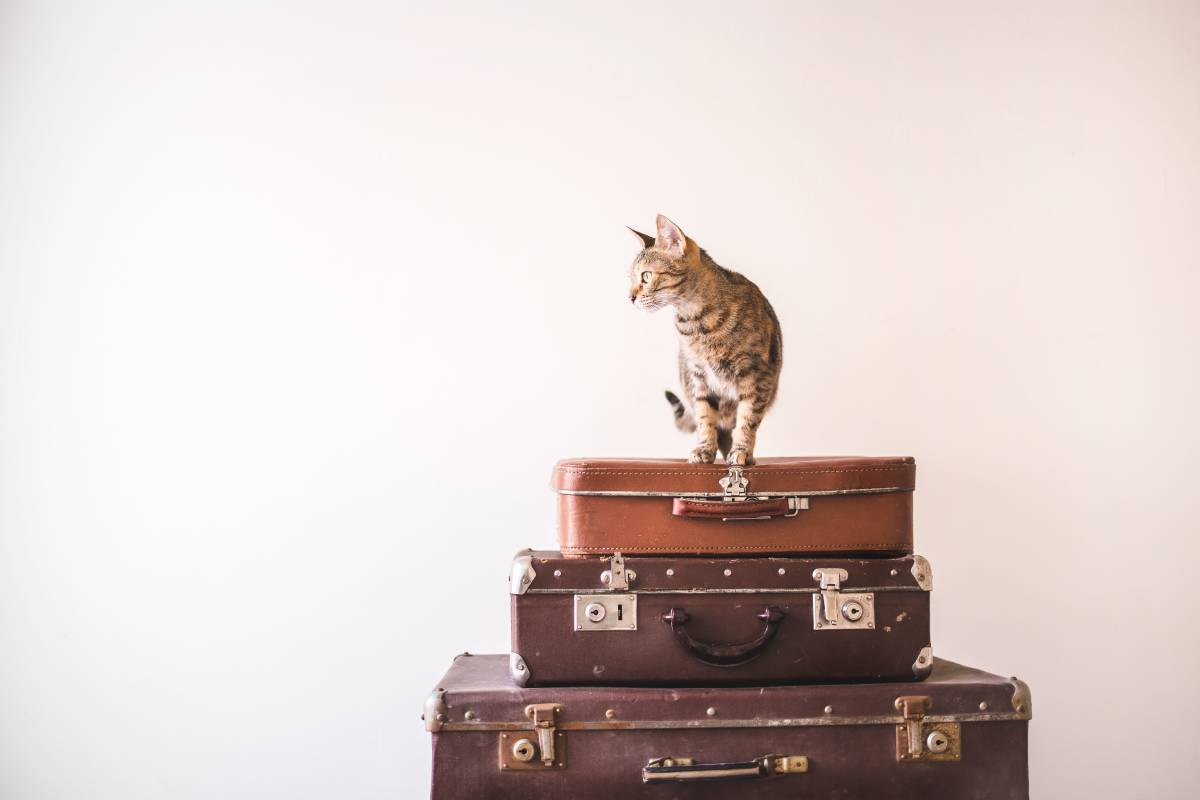Traveling with pets can be an incredibly rewarding experience, allowing you to share new adventures and create lasting memories with your furry companions. Whether you’re exploring scenic hiking trails, enjoying a road trip, or relaxing on a beach, having your pet by your side can make every moment more special.
However, traveling with pets also comes with its unique set of challenges. Ensuring your pet’s comfort, safety, and happiness while on the go requires careful planning and preparation.
Proper preparation is essential for a smooth and enjoyable trip for both you and your pet. From health and safety checks to finding pet-friendly accommodations and understanding travel etiquette, there are several factors to consider before embarking on a journey with your furry friend.
By taking the time to plan ahead and understand your pet’s needs, you can reduce stress and ensure a fun and memorable experience for everyone involved.
In this article, we’ll provide you with valuable tips and advice on how to travel with your pet, covering everything from pre-travel preparations and choosing the right mode of transportation to finding pet-friendly accommodations and understanding traveling etiquette. Whether you’re a seasoned pet traveler or planning your first trip with your furry friend, these tips will help you make the most of your adventures together.
1. Pre-Travel Preparations
A. Health and Safety Check
Before embarking on any trip with your pet, it’s essential to ensure they are in good health and ready for the journey ahead. Here are some key steps to take:
- Visit the Vet for a Health Check-Up: Schedule a visit to your veterinarian to ensure your pet is fit for travel. A thorough examination will help identify any underlying health issues that might need attention before your trip. Your vet can also offer specific advice tailored to your pet’s needs based on the mode of transportation and destination.
- Ensure Vaccinations and Health Certificates are Up-to-Date: Depending on your destination, certain vaccinations may be required or recommended. Make sure your pet’s vaccinations are up-to-date and obtain any necessary health certificates, especially if you are traveling across state lines or internationally. Health certificates typically need to be issued within a specific timeframe before travel, so it’s important to plan accordingly.
- Discuss Any Medications or Health Concerns: If your pet is on any medications or has existing health concerns, consult with your vet about managing these conditions while traveling. Ask for enough medication to last the entire trip and discuss any potential side effects or complications that might arise. Your vet may also recommend additional preventive measures, such as flea, tick, or heartworm protection, depending on your destination.
By taking these steps, you can ensure your pet is healthy and prepared for the adventure, helping to prevent any unexpected health issues during your travels.
B. Pet Identification
Ensuring your pet is properly identified is crucial for their safety, especially when traveling. Pets can easily become disoriented in unfamiliar environments, so taking steps to ensure they can be quickly reunited with you is essential.
- Microchipping and Updating Microchip Information: A microchip is a small device implanted under your pet’s skin that contains a unique identification number. This number can be read by a scanner and is linked to your contact information in a pet recovery database. If your pet is already microchipped, make sure your contact details are up-to-date in the database. If your pet isn’t microchipped, consider having it done before your trip—it’s a quick, painless procedure that greatly increases the chances of being reunited if your pet gets lost.
- Importance of a Collar with an ID Tag and Current Contact Details: In addition to a microchip, your pet should always wear a collar with an ID tag that includes your current contact information. This simple step ensures that anyone who finds your pet can easily contact you. For extra safety, consider using a breakaway collar that will release if it gets caught on something, preventing injury to your pet.
C. Packing Essentials
Packing the right essentials for your pet is key to ensuring their comfort and well-being throughout your journey. Here’s a list of must-have items to pack:
- List of Must-Have Items:
- Food: Bring enough of your pet’s regular food to last the entire trip, plus a little extra in case of delays.
- Water: Always have a supply of fresh water to keep your pet hydrated, especially during long trips.
- Bowls: Pack collapsible or travel-sized bowls for food and water, which are convenient and space-saving.
- Leash: A sturdy leash is essential for walks and bathroom breaks, as well as for keeping your pet secure in unfamiliar surroundings.
- Waste Bags: Bring plenty of waste bags for picking up after your pet. Being a responsible pet owner helps keep public spaces clean and enjoyable for everyone.
- Toys: Pack a few of your pet’s favorite toys to keep them entertained and provide a sense of familiarity.
- Bedding: Bringing your pet’s bed or blanket can help them feel more comfortable and at ease in new environments.
- Travel-Specific Items:
- Pet First Aid Kit: A basic pet first aid kit should include items like bandages, antiseptic wipes, tweezers, and any specific medications your pet might need. Having these on hand can be invaluable in case of minor injuries or emergencies.
- Collapsible Bowls: Lightweight and easy to pack, collapsible bowls are perfect for feeding your pet on the go.
- Travel Crates or Carriers: A secure travel crate or carrier is a must for safe transport, whether by car, plane, or other modes of transportation. Ensure the crate is well-ventilated, appropriately sized for your pet, and familiar to them before the trip to reduce anxiety.
By preparing these essentials, you’ll help ensure your pet’s needs are met and make your travel experience as stress-free as possible for both of you.
2. Choosing the Right Mode of Transportation
Choosing the best mode of transportation for your pet is essential to ensuring a safe and comfortable journey. Different modes of travel have unique requirements and considerations, so it’s important to understand what’s involved and how to best prepare.
A. Car Travel Tips
Traveling by car is often the most flexible and convenient option for pet owners. However, ensuring your pet’s safety and comfort during car rides is crucial.
- Safety Measures: Using a Pet Seatbelt or Carrier: Pets should be safely restrained while traveling in a car to prevent injury in case of sudden stops or accidents. Use a pet seatbelt, harness, or secure carrier to keep your pet safe and prevent them from distracting the driver. For larger pets, a pet barrier that keeps them in the back seat or cargo area can also be a good option.
- Regular Breaks for Exercise, Hydration, and Bathroom Needs: Plan regular stops every couple of hours to give your pet a chance to stretch, relieve themselves, and drink water. These breaks are vital for preventing restlessness and ensuring your pet remains comfortable throughout the trip.
- Keeping Pets Comfortable: Temperature Control, Ventilation, and Familiar Items: Maintain a comfortable temperature in the car, and never leave your pet unattended in a vehicle, especially in extreme temperatures. Make sure your pet has adequate ventilation and provide familiar items like a favorite blanket or toy to help them feel secure and relaxed during the journey.
B. Air Travel Guidelines

Air travel with pets requires careful planning and adherence to airline policies to ensure a safe flight for your furry friend.
- Research Airline Policies and Restrictions for Pet Travel: Different airlines have varying rules and regulations regarding pet travel, including size and breed restrictions, crate specifications, and fees. Research these policies well in advance and book a pet-friendly flight that accommodates your pet’s needs.
- Preparing Your Pet for the Flight: Crate Training and Familiarization: If your pet will be traveling in a crate, it’s important to acclimate them to it before the trip. Spend time crate training your pet, making sure they see it as a safe and comfortable space. This preparation can reduce stress and anxiety during the flight.
- Necessary Documents and Health Certificates for Flying: Most airlines require a health certificate issued by a veterinarian within a specific timeframe before the flight, usually 10 days. Ensure you have all necessary documents, including vaccination records and any other required paperwork, to avoid issues at check-in.
C. Public Transport and Other Modes
Traveling with pets on public transportation can be more challenging, as not all services are pet-friendly, and there are often additional rules to follow.
- Guidelines for Traveling with Pets on Buses, Trains, and Ferries: Before planning a trip on public transport, check the pet policies of the service provider. Some buses and trains may only allow small pets in carriers, while others may have designated pet-friendly cars or sections. Ferries might have specific areas where pets are allowed or require pets to stay in vehicles or kennels during the journey.
- Ensuring Pets Are Comfortable and Non-Intrusive to Other Passengers: When using public transport, it’s essential to keep your pet calm and well-behaved to ensure a pleasant experience for everyone. Use a secure carrier or leash, provide a comfortable space for your pet, and be mindful of other passengers who may not be comfortable around animals. Bringing along a few treats or toys can help keep your pet occupied and content during the trip.
By carefully selecting the mode of transportation that best suits your pet’s needs and preparing accordingly, you can ensure a safe, comfortable, and enjoyable travel experience for both you and your furry companion.
3. Finding Pet-Friendly Accommodations
When traveling with your pet, finding the right accommodations is essential for a comfortable stay. Whether you’re staying in hotels, rentals, or outdoor campgrounds, it’s important to choose places that welcome pets and provide a safe and enjoyable environment.
A. Hotels and Rentals
Hotels and vacation rentals can be great options for traveling with pets, but it’s important to do your research and prepare in advance to ensure a smooth stay.
- Tips for Finding Pet-Friendly Accommodations: When searching for pet-friendly hotels or rentals, use travel websites and filters specifically for pet-friendly options. Look for accommodations that not only allow pets but also cater to them with amenities like pet beds, bowls, or even pet-sitting services. Reading reviews from other pet owners can provide valuable insights into the quality of the pet-friendly experience.
- Understanding Pet Policies and Potential Fees: Each hotel or rental property will have its own pet policy, which may include restrictions on the number, size, or breed of pets allowed. Be sure to understand these policies fully before booking. Many accommodations also charge additional pet fees, which can vary significantly, so it’s important to factor this into your travel budget.
- Making Accommodations Comfortable for Your Pet: Bringing Familiar Items and Setting Up a Cozy Space: To help your pet feel at home in an unfamiliar environment, bring along some of their favorite items, such as a bed, blanket, or toys. Set up a designated space in the room where your pet can relax and feel secure. Establishing a routine similar to home can also help ease your pet’s anxiety and make the stay more enjoyable for everyone.
B. Campgrounds and Outdoor Stays
For those who enjoy the great outdoors, camping with pets can be a fun and rewarding experience. However, it’s important to choose the right campsite and take precautions to ensure a safe and enjoyable adventure.
- Choosing Pet-Friendly Campsites and Outdoor Areas: When planning a camping trip, research campgrounds and outdoor areas that are pet-friendly. Many national and state parks have specific rules and designated areas where pets are allowed. Ensure the campsite you choose welcomes pets and offers amenities like pet-friendly trails or designated off-leash areas.
- Safety Tips for Outdoor Stays: Wildlife Awareness, Leash Regulations, and Staying Hydrated: Safety is paramount when camping with pets. Keep your pet on a leash or in a secure, enclosed area to prevent them from wandering off or encountering wildlife. Be aware of local wildlife and take precautions to protect your pet from potential dangers, such as snakes or ticks. Always carry plenty of water for both you and your pet, and ensure they stay hydrated, especially in warm weather or during strenuous activities.
By choosing pet-friendly accommodations and taking steps to ensure your pet’s comfort and safety, you can create a relaxing and enjoyable experience for both you and your furry friend during your travels.
4. Traveling Etiquette and Safety
Maintaining proper etiquette and ensuring the safety of your pet and those around you are crucial aspects of traveling with pets. Being considerate of others and prepared for emergencies will make your journey smoother and more enjoyable for everyone.
A. Pet Etiquette in Public Spaces
When traveling, you’ll likely encounter various public spaces where pets are allowed. It’s important to ensure your pet is well-behaved and respectful of others.
- Training Your Pet for Social Settings: Commands and Behaviors: Before traveling, train your pet to respond reliably to basic commands such as “sit,” “stay,” “come,” and “leave it.” These commands can help manage your pet’s behavior in new and potentially distracting environments. Socialize your pet with different people, animals, and settings to help them become accustomed to various social situations and reduce anxiety or fearfulness.
- Respecting Other Travelers and Public Spaces: Leash Laws, Cleaning Up After Pets, and Minimizing Noise: Always adhere to local leash laws and keep your pet on a leash unless you are in a designated off-leash area. Respect others by cleaning up after your pet and disposing of waste properly. Be mindful of noise, especially in shared spaces like hotels or public transportation; try to keep your pet calm and quiet to avoid disturbing others.
B. Handling Emergencies
Being prepared for potential emergencies is a key part of responsible pet travel. Knowing how to handle unexpected situations can prevent minor issues from becoming major problems.
- Recognizing Signs of Stress or Illness in Your Pet: During travel, pets may experience stress or become ill due to the unfamiliar environment and change in routine. Watch for signs of stress, such as excessive panting, drooling, shaking, or unusual behavior. Also, be alert to symptoms of illness, such as vomiting, diarrhea, or lethargy. Early recognition can help you address these issues promptly and prevent them from escalating.
- Knowing the Location of the Nearest Vet or Emergency Pet Hospital: Before you travel, research and note the locations of veterinary clinics and emergency pet hospitals near your destination. Having this information readily available can save valuable time in an emergency. Keep a list of contacts and addresses on your phone or written down, so you are prepared if your pet needs immediate medical attention.
- Having an Emergency Plan: Contacts, Insurance Information, and First Aid: Create an emergency plan that includes contact information for your regular veterinarian, emergency clinics, and pet insurance details, if applicable. Carry a pet first aid kit that includes items like bandages, antiseptic wipes, tweezers, and any medications your pet may need. Familiarize yourself with basic pet first aid procedures, such as how to perform CPR or treat minor wounds.
By practicing good etiquette and being prepared for emergencies, you can ensure a safe, pleasant, and stress-free travel experience for both you and your pet.
5. Special Considerations for Different Types of Pets
Every type of pet has unique needs and considerations when it comes to traveling. Tailoring your approach based on your pet’s specific requirements ensures a safe and comfortable journey for them.
A. Traveling with Dogs
Dogs are one of the most common travel companions, but they come with their own set of needs that vary greatly depending on the breed, size, and temperament.
- Specific Tips for Dog Owners: Exercise Needs, Socialization, and Breed-Specific Considerations:
- Exercise Needs: Dogs generally need regular exercise, even while traveling. Plan for frequent breaks during car rides to allow them to stretch their legs, relieve themselves, and expend energy. Look for pet-friendly parks or trails along your route or at your destination where your dog can run and play.
- Socialization: Socialization is crucial, especially in new environments. Gradually introduce your dog to new people, pets, and settings to ensure they are comfortable and well-behaved. If your dog is shy or anxious around strangers or other animals, consider working with a trainer before your trip.
- Breed-Specific Considerations: Some dog breeds have specific travel needs. For example, brachycephalic breeds (like Bulldogs and Pugs) may have breathing difficulties in high temperatures or stress, so extra care must be taken to keep them cool and comfortable. Large breeds may require more space in vehicles and accommodations, while high-energy breeds might need more exercise and mental stimulation.
B. Traveling with Cats
Cats are generally more sensitive to changes in environment and routine, which can make travel challenging. However, with proper preparation, traveling with a cat can be manageable.
- Tips for Cat Owners: Litter Box Management, Carrier Comfort, and Stress Reduction:
- Litter Box Management: When traveling with a cat, managing their litter box needs is crucial. Bring a portable litter box and be prepared to clean it frequently. If you’re staying in a hotel or rental, set up the litter box in a quiet, easily accessible area for your cat.
- Carrier Comfort: A comfortable and secure carrier is essential for cat travel. Choose a carrier that is large enough for your cat to stand up, turn around, and lie down comfortably. Line the carrier with a familiar blanket or towel and consider adding a favorite toy to help your cat feel more secure. Getting your cat accustomed to the carrier before the trip can also reduce anxiety.
- Stress Reduction: Cats can be more prone to stress when traveling, so it’s important to minimize this as much as possible. Keep the carrier covered with a breathable blanket to reduce visual stimuli during transit, and use calming pheromone sprays or diffusers in the car or hotel room. Playing soft music or white noise can also help to soothe your cat.
C. Other Pets (Birds, Small Animals, Reptiles, etc.)
Traveling with less common pets requires careful planning to meet their specific needs and ensure their safety.
- Guidelines for Traveling with Less Common Pets: Cage Requirements, Temperature Control, and Dietary Needs:
- Cage Requirements: Birds, small animals (like hamsters and guinea pigs), and reptiles need secure cages or enclosures during travel. The cage should be well-ventilated and sturdy to prevent escape or injury. Ensure the enclosure is appropriately sized for your pet and that they have enough room to move around comfortably.
- Temperature Control: Many small pets and reptiles are sensitive to temperature changes, so it’s important to maintain a stable environment during travel. Avoid exposing your pet to direct sunlight, drafts, or extreme temperatures. Use portable heat pads or cooling packs if necessary to regulate the temperature in the enclosure.
- Dietary Needs: Different pets have unique dietary requirements that must be met while traveling. Bring an adequate supply of your pet’s regular food and fresh water. For reptiles and small animals, consider packing fresh produce or specialized diets in a cooler to keep them fresh and safe for consumption.
By considering the unique needs of your pet and preparing accordingly, you can ensure a safe, comfortable, and stress-free travel experience for all types of pets.
Conclusion
Traveling with your pet can be an incredibly rewarding experience, allowing you to create lasting memories and share new adventures together. However, to ensure a smooth and enjoyable trip, it’s essential to prepare thoroughly and consider your pet’s unique needs. From pre-travel preparations and choosing the right mode of transportation to finding pet-friendly accommodations and understanding traveling etiquette, there are many factors to keep in mind to ensure your pet’s comfort and safety.
Remember to plan carefully, pay attention to your pet’s health and well-being, and respect others during your travels. With the right preparation and mindset, you can minimize stress and make your journey a positive experience for both you and your furry companion.
We’d love to hear from you! Share your pet travel experiences or tips in the comments below and help other pet owners make their adventures even better.
Additional Resources
To help you plan your next pet-friendly adventure, here are some helpful resources:
- Pet Travel Agencies and Services:
- PetRelocation – A service that assists with pet travel logistics, including flights and documentation.
- BringFido – A website for finding pet-friendly hotels, restaurants, and attractions.
- Websites with Pet-Friendly Accommodations:
- Airbnb – Use the pet-friendly filter to find vacation rentals that welcome pets.
- Hotels.com – Search for pet-friendly hotels by location.
- Travel Products for Pets:
- Amazon Pet Travel Products – A wide selection of pet travel essentials, from carriers and crates to travel bowls and pet first aid kits.
- Further Reading:
- Training for Travel: Check out resources on crate training and behavior modification to help prepare your pet for travel.
- Health Considerations: Look for articles on pet health checks, vaccination requirements, and tips for managing pet anxiety during travel.
By utilizing these resources and preparing carefully, you can ensure a safe, comfortable, and enjoyable journey for you and your pet. Safe travels!
























